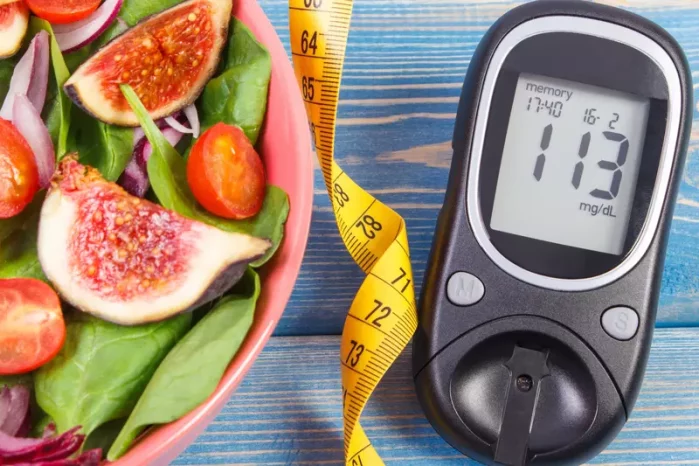Blood glucose monitoring is one of the most essential components of diabetes management. It allows individuals with diabetes to make informed decisions about their diet, exercise, and medication, helping to ensure that blood sugar levels remain within a target range. However, one common question that often arises is: “When should I check my blood glucose levels?”
The timing of blood glucose tests is crucial. It can depend on various factors such as the type of diabetes, the medications being used, personal health goals, and lifestyle habits. This article aims to provide a clear and detailed guide on when to check blood glucose levels to optimize diabetes management.
Understanding Blood Glucose Monitoring
Before diving into the specifics of timing, it is important to understand why blood glucose monitoring is so vital. Blood glucose levels can fluctuate throughout the day due to several factors, including food intake, physical activity, stress, illness, and medication. By checking blood glucose levels regularly, individuals with diabetes can assess how their body responds to these factors and make timely adjustments.
There are two main methods of blood glucose monitoring:
Self-Monitoring of Blood Glucose (SMBG): This is the most common method, where individuals use a glucose meter to test a drop of blood from a fingertip. This method offers real-time readings and is typically used multiple times throughout the day.
Continuous Glucose Monitoring (CGM): This involves wearing a small sensor on the skin that provides continuous readings of glucose levels, typically every few minutes. CGMs are particularly useful for people who need frequent blood glucose checks, as it allows for real-time data and trend analysis.
Now, let’s explore when individuals with diabetes should check their blood glucose to ensure optimal health outcomes.
When Should Blood Glucose Be Checked?
1. Fasting Blood Glucose
The first blood glucose check of the day is typically done after fasting for at least 8 hours. This usually means checking blood glucose upon waking, before having breakfast. Fasting blood glucose levels reflect how well the body regulates blood sugar overnight and how effectively insulin is working.
Why check it? Fasting blood glucose levels are crucial for assessing baseline blood glucose control. For individuals with diabetes, checking fasting levels helps determine if adjustments are needed in their treatment plan, such as changes in medication or insulin dosages.
Ideal Range: Fasting blood glucose should generally fall between 70–130 mg/dL (3.9–7.2 mmol/L). A higher fasting blood glucose level may indicate that your overnight blood sugar regulation needs to be improved, while a low level could suggest an increased risk of hypoglycemia (low blood sugar).
When to test: Every morning, upon waking, before eating.
2. Before Meals
Checking blood glucose before meals gives insight into how well blood sugar levels are being controlled throughout the day and provides a reference point for postprandial readings (after meals). Testing before meals helps individuals with diabetes assess whether their insulin or medication doses need to be adjusted.
Why check it? Pre-meal glucose readings help to fine-tune meal planning. This is particularly important for those who use insulin or other blood glucose-lowering medications, as it helps determine the appropriate amount of insulin to administer prior to eating.
Ideal Range: Pre-meal blood glucose should generally fall between 80–130 mg/dL (4.4–7.2 mmol/L). High pre-meal blood glucose could indicate poor blood sugar control, while low levels may suggest the need for a snack before meals to avoid hypoglycemia.
When to test: 30 minutes to 1 hour before eating a meal.
3. After Meals (Postprandial Blood Glucose)
Postprandial blood glucose refers to the blood sugar level measured 2 hours after starting a meal. After eating, the body’s glucose levels naturally rise, and this test helps to assess how effectively the body is processing food and whether insulin or medication is working as expected.
Why check it? Postprandial blood glucose measurements provide insights into how the body handles carbohydrate intake, which can vary greatly from person to person. This check is especially important for those with Type 2 diabetes who may have insulin resistance, as high after-meal blood glucose readings can suggest that the insulin response isn’t sufficient.
Ideal Range: Postprandial blood glucose should generally be less than 180 mg/dL (10 mmol/L) two hours after eating. Higher readings may indicate the need for changes in diet, exercise, or medication.
When to test: 2 hours after the first bite of food during a meal.
4. Before and After Exercise
Exercise can have a significant effect on blood glucose levels, either raising or lowering them depending on the intensity and duration of the activity. For individuals with diabetes, checking blood glucose before and after exercise is crucial to ensure that glucose levels remain within a safe range.
Why check it? Physical activity can increase insulin sensitivity, which means that blood glucose levels may drop after exercise. On the other hand, intense exercise (such as weightlifting or high-intensity interval training) may cause blood sugar levels to rise temporarily due to the release of stress hormones. Monitoring before and after exercise helps individuals understand how their body responds and avoid extreme fluctuations.
Ideal Range: Blood glucose levels should be between 90–250 mg/dL (5–13.9 mmol/L) before exercise. If levels are above this range, exercise may need to be postponed or adjusted. After exercise, blood glucose should ideally return to pre-exercise levels or slightly lower.
When to test: Before starting exercise and immediately after.
5. During Illness or Infection
Illness and infection can significantly affect blood glucose levels. During illness, the body produces stress hormones, which can lead to elevated blood sugar levels. Additionally, people with diabetes may not feel like eating or drinking, which can affect glucose levels. In these circumstances, more frequent blood glucose testing is necessary.
Why check it? Illness can cause fluctuations in blood glucose due to changes in eating habits, physical activity, and the body’s metabolic response. Monitoring blood glucose during illness helps to prevent both hyperglycemia and hypoglycemia and ensures that appropriate adjustments are made to medication and treatment plans.
Ideal Range: Similar to the regular target ranges, but more frequent monitoring is needed to ensure glucose stays within safe limits. If blood glucose exceeds 250 mg/dL (13.9 mmol/L), individuals should consult their healthcare provider for guidance.
When to test: Every 2–4 hours during illness or infection, especially if there are significant changes in appetite, activity, or medication.
6. Before Bedtime
Blood glucose levels before bed provide insight into how well glucose is being controlled overnight. Since the body’s insulin sensitivity tends to decrease during sleep, nighttime blood glucose readings help predict whether levels might fall too low during the night or rise too high.
Why check it? Checking blood glucose before bedtime helps to prevent hypoglycemia during the night, especially for individuals using insulin or other glucose-lowering medications. It can also identify trends that require adjusting medication, exercise, or meal plans.
Ideal Range: Bedtime blood glucose should generally fall between 100–140 mg/dL (5.6–7.8 mmol/L). Higher readings may indicate the need for an insulin adjustment, while lower readings may suggest the need for a small snack to prevent nighttime hypoglycemia.
When to test: Just before going to bed.
7. Before and After Travel
Travel, especially crossing time zones, can disrupt regular eating and exercise routines, which can lead to unexpected blood glucose fluctuations. It is essential to check blood glucose before and after travel to prevent complications.
Why check it? Traveling often involves changes in meal timing, physical activity, and medication schedules, all of which can affect blood glucose levels. More frequent monitoring during travel helps individuals maintain stable blood glucose levels despite these changes.
Ideal Range: The same target ranges as typical daily checks apply. However, it’s important to note that stress and lack of sleep while traveling can raise blood glucose levels.
When to test: Before starting your trip, during long flights or drives, and after arriving at your destination.
8. After Adjusting Medications
Any changes to insulin or diabetes medication (such as starting a new drug, changing dosages, or switching between brands) should be followed by more frequent blood glucose monitoring. This ensures that the new regimen is effective and allows for quick adjustments if necessary.
Why check it? Medication adjustments can cause fluctuations in blood glucose levels, either improving or worsening control. More frequent testing allows individuals to assess how the new medication is working and helps prevent complications from sudden changes.
Ideal Range: Similar to regular monitoring, with close attention paid to any significant changes.
When to test: As directed by your healthcare provider, especially during the first week or two after medication changes.
Conclusion
Regular blood glucose monitoring is essential for individuals with diabetes, and the timing of these checks plays a crucial role in managing the condition effectively. By testing at the right times — such as before meals, after meals, during exercise, or when feeling unwell — individuals can ensure that their blood sugar levels remain within a safe and healthy range. In turn, this helps prevent both the immediate effects of high or low blood sugar and the long-term complications associated with poorly controlled diabetes.
Working closely with a healthcare provider to determine the optimal times for blood glucose monitoring is key to tailoring diabetes management to each individual’s needs. By understanding the when, why, and how of blood glucose testing, people with diabetes can take control of their health and live fulfilling, active lives.
Related topics:
What Is Random Blood Sugar Level Range?



























